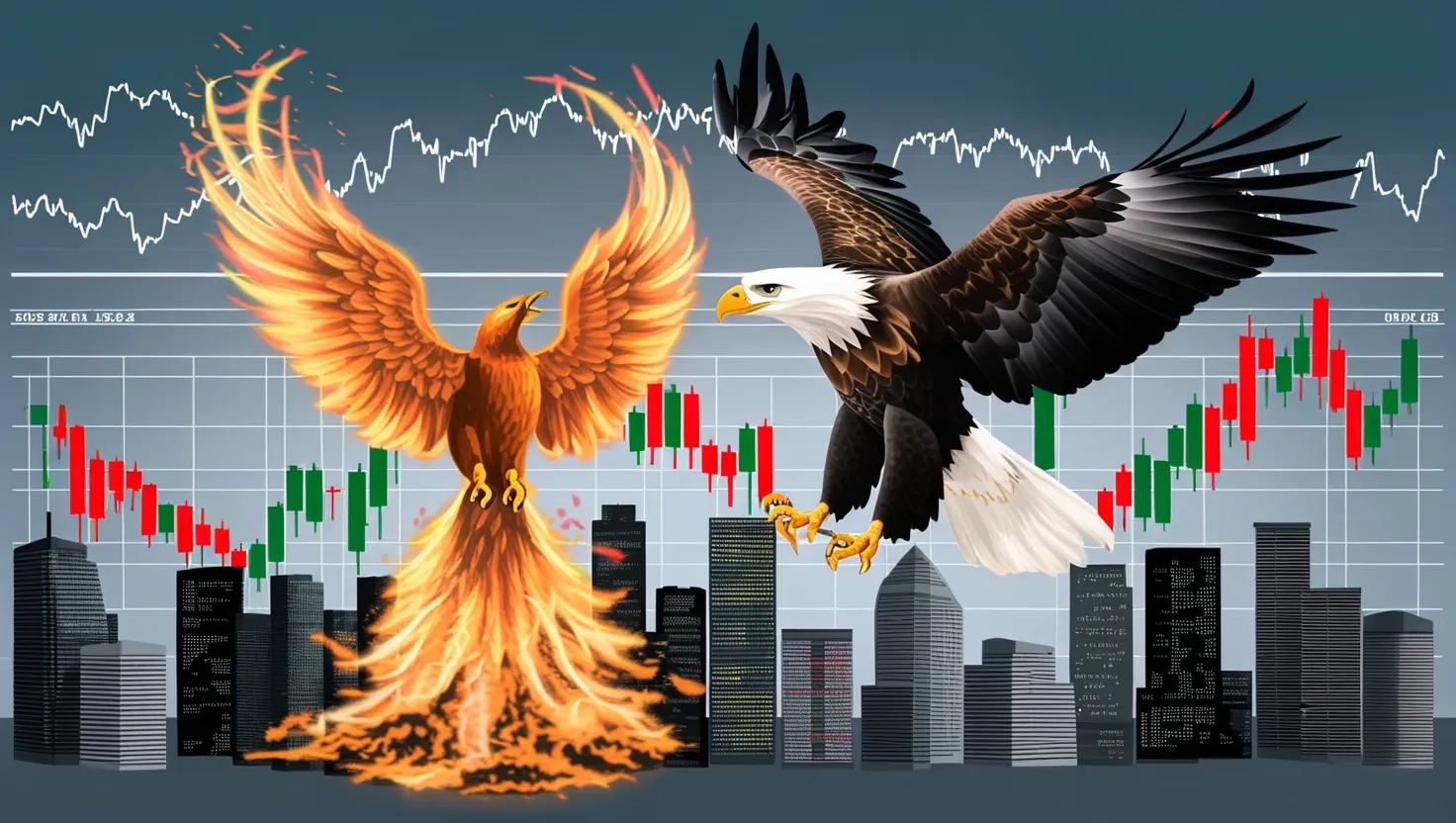When it comes to value investing, the traditional approach often emphasizes cold, hard data and financial analysis. However, there’s a lesser-known but equally important aspect to consider: the balance between rational analysis and emotional insight. This approach, which we can call “Equanimity Economics,” involves integrating your emotional instincts with evidence-based decisions to create a more rounded and effective investment strategy.
Understanding Equanimity Economics
Equanimity, in its simplest form, is about maintaining a calm and composed mindset, even in the face of turmoil. In investing, this means being aware of your emotional state and how it influences your decisions. It’s not about ignoring your emotions but rather about acknowledging them and ensuring they don’t cloud your judgment.
Imagine you’re considering investing in a company that has all the right financial metrics – strong returns on invested capital, a solid competitive advantage, and a history of continuous growth. However, every time you think about this company, you feel a nagging sense of doubt. Perhaps it’s because the industry is highly competitive, or maybe there’s a recent scandal that has left you uneasy. In Equanimity Economics, you wouldn’t dismiss this feeling outright; instead, you’d examine it closely.
The Role of Emotional Insight
Emotional insight is crucial because it can often pick up on subtle cues that pure data analysis might miss. For instance, if you’re analyzing a company’s financial statements and everything looks perfect, but you still feel uneasy, it might be worth digging deeper. Maybe there’s an underlying issue with the company’s culture or management that isn’t immediately apparent from the numbers.
Li Lu, a renowned value investor, emphasizes the importance of understanding the dynamic of competition and the enduring competitive advantages of a business. He suggests that truly good businesses are those that can fend off competitors and maintain above-average returns on invested capital over a long period. However, this analysis isn’t just about numbers; it’s also about understanding the intangible factors that contribute to a company’s success, such as its culture and management’s ability to allocate capital effectively.
Avoiding Psychological Biases
One of the key challenges in integrating emotional insight with rational analysis is avoiding psychological biases. For example, the confirmation bias can lead you to seek out information that supports your existing feelings about a company, while ignoring contradictory evidence. Equanimity Economics encourages you to be honest with yourself and to study the investment from every possible angle until you’re convinced that your feelings are aligned with the facts.
Aswath Damodaran, a finance professor, notes that value investing has sometimes become too rigid and ritualistic, leading to underperformance. He argues that value investors need to be more flexible and open to different dimensions of value, beyond just low PE ratios and high dividend yields. This flexibility also extends to being aware of your own biases and adjusting your approach accordingly.
Practical Application
So, how do you apply Equanimity Economics in your investment decisions? Here’s a step-by-step approach:
- Initial Analysis: Start with the traditional financial analysis. Look at the company’s financial statements, its competitive position, and its growth prospects.
- Emotional Check-in: Once you have the data, take a moment to reflect on how you feel about the investment. Are you excited, cautious, or indifferent?
- Dig Deeper: If your emotions are at odds with the data, dig deeper. Look for intangible factors that might be influencing your feelings. This could include reading about the company’s culture, talking to current or former employees, or analyzing industry trends.
- Balance Your View: Ensure that your emotional insights are balanced with the hard data. Avoid letting your feelings overshadow the facts, but also don’t ignore them entirely.
- Continuous Monitoring: As you hold the investment, continue to monitor both the financial performance and your emotional response. Adjust your strategy as needed.
Real-Life Examples
Let’s consider a real-life example to illustrate this approach. Suppose you’re looking at investing in a tech company that has been growing rapidly but is also highly volatile. The financial metrics look strong, but every time you think about investing, you feel a sense of anxiety. This anxiety might be due to the company’s high valuation multiples or the intense competition in the tech sector.
In this case, you wouldn’t just ignore your anxiety; you’d use it as a cue to dig deeper. You might look into the company’s competitive advantages, its management team’s track record, and the broader industry trends. If, after this analysis, you still feel uneasy, it might be wise to either avoid the investment or to hedge your position.
The Importance of Equanimity
Maintaining equanimity is crucial in this process. It allows you to stay calm and composed, even when the market is volatile. This calmness helps you make more rational decisions and avoid the pitfalls of emotional investing, such as panic selling or impulsive buying.
In everyday life, equanimity can be practiced through mindfulness and self-reflection. For instance, if you find yourself getting overly excited about a potential investment, take a step back and reflect on why you’re feeling that way. Is it based on solid analysis, or is it just enthusiasm? Similarly, if you’re feeling overly pessimistic, consider whether your feelings are grounded in reality or if they’re driven by fear.
Integrating Instincts with Evidence
The goal of Equanimity Economics is not to replace evidence-based decisions with emotional instincts but to integrate the two. By doing so, you create a more holistic approach to investing that considers both the hard data and the softer, more subjective aspects.
For example, when Warren Buffett and Charlie Munger transformed Berkshire Hathaway from a struggling textile company into a multinational conglomerate, they didn’t just rely on financial analysis. They also used their instincts and understanding of human behavior to make strategic decisions. They took the cash flow from the textile business and skillfully invested it in other businesses that were on the right trajectory, demonstrating a blend of rational analysis and emotional insight.
Conclusion
Investing is not just about numbers; it’s also about understanding the human element. By integrating emotional insight with rational analysis, you can create a more balanced and effective investment strategy. This approach, Equanimity Economics, encourages you to be aware of your emotions, avoid psychological biases, and make decisions that are grounded in both data and instinct.
In the end, it’s about finding that sweet spot where your head and heart align, allowing you to make investments that are not just financially sound but also emotionally sustainable. By embracing this holistic approach, you can navigate the complex world of value investing with greater clarity and confidence.






